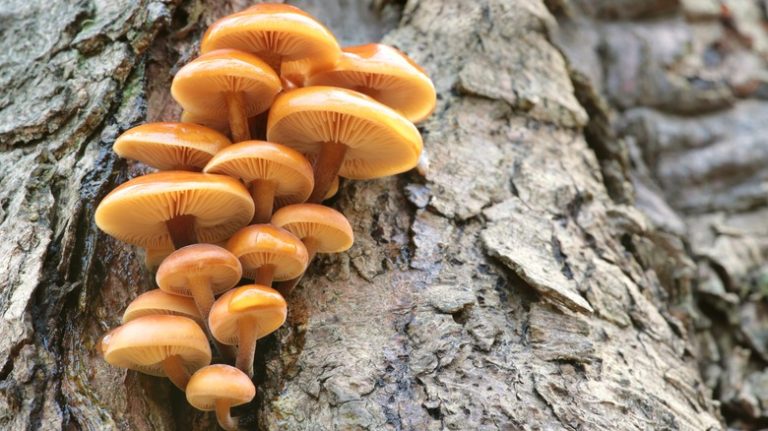The Texas Mountain Laurel, also known as Mescal Bean, is a slow-growing evergreen shrub that belongs to the legume family. It is native to the southern United States, specifically Texas, and can be found in zones 7 to 10. This beautiful flowering plant is known for its wonderful fragrance and showy, dark purple-blue flowers that appear in early spring.
Texas Mountain Laurel plants have leathery, dark green foliage and can grow up to 15 feet tall and 10 feet wide. They have a multi-trunked branching pattern and their branches reach for the sky, creating a beautiful and dense canopy. Their attractive flowers and foliage make them a popular choice for gardens and landscapes.
These plants prefer well-drained soils and require minimal pruning. They should be planted in full sun or light shade and are tolerant of a wide range of temperatures. However, they may suffer from cold damage in the winter, so proper care should be taken to protect them during frost periods. Texas Mountain Laurels are also drought-tolerant and can survive with low rainfall and humidity.
It is important to note that all parts of the Texas Mountain Laurel, including the seeds, are highly poisonous if ingested. This plant contains a toxic compound called cytisine, which can cause serious health problems if consumed. It is also worth mentioning that the flowers of the Texas Mountain Laurel attract bees and moths, particularly the larvae of the Genista caterpillar, which feeds exclusively on the plant’s foliage and contributes to its pollination.
Propagation of the Texas Mountain Laurel can be done from seeds, which should be treated with boiling water or scarification to improve germination. It can also be propagated from cuttings, but this method may have a lower success rate. The slow-growing nature of this plant means that it may take several years for it to reach its full vigor and size.
In conclusion, the Texas Mountain Laurel is a beautiful and fragrant evergreen shrub that is native to Texas. Its bright purple-blue flowers and dark green foliage make it a wonderful addition to any garden or landscape. However, caution should be exercised when handling or consuming this plant, as it is highly toxic. With the right care and attention, the Texas Mountain Laurel can thrive in a variety of environmental conditions and add beauty to any outdoor space.
Texas Mountain Laurel
The Texas Mountain Laurel, also known as Sophora Secundiflora, is a common evergreen shrub or small tree native to the southwestern United States. It is found in the mountainous regions of Texas and has a wide range of habitats, from dry, rocky slopes to moist canyons. The Texas Mountain Laurel is known for its beautiful and fragrant purple-blue flowers, which bloom in the early spring and can be seen for several weeks. These flowers are pendulous and are a wonderful addition to any landscape.
The foliage of the Texas Mountain Laurel is bright green and aromatic, with a texture similar to that of the laurel family. Although it is a common plant in Texas, it requires some care and maintenance to keep it healthy and attractive. The Texas Mountain Laurel needs full sun to light shade and requires well-drained soils. It is tolerant of different soil types, including clay and sandy soils, but it grows best in a soil with good drainage. The Texas Mountain Laurel is also relatively drought-tolerant once established and should be watered only during dry periods.
In terms of temperature, the Texas Mountain Laurel is hardy in USDA zones 7 to 9, which means it can withstand temperatures as low as 0°F (-18°C). It can be planted in a variety of landscapes, including gardens, lawns, and even in containers. However, it should be noted that the Texas Mountain Laurel is poisonous. All parts of the plant, including the seeds and pods, contain the toxic compound cytisine. Therefore, it is important to keep this plant away from children and pets.
In addition to its beauty, the Texas Mountain Laurel has some interesting characteristics. It is known to attract a variety of wildlife, including caterpillars and butterflies. The fruit of the Texas Mountain Laurel is a legume and is commonly eaten by wildlife. The trunk of the Texas Mountain Laurel is often twisted and gnarled, giving it a unique and interesting appearance.
In terms of management, the Texas Mountain Laurel requires little pruning and is generally disease-resistant. However, it can sometimes be affected by caterpillars and other pests. If necessary, pest management should be done using the appropriate methods. Invasive species management is also important, as the Texas Mountain Laurel can sometimes spread rapidly in certain environments.
In conclusion, the Texas Mountain Laurel is a beautiful and common plant found in the mountainous regions of Texas. It is known for its fragrant purple-blue flowers and bright green foliage. The Texas Mountain Laurel is relatively low-maintenance and can be grown in a variety of environments. However, it is important to be cautious due to its poisonous nature. Overall, the Texas Mountain Laurel is a wonderful addition to any garden or landscape.
Sophora secundiflora Texas Mountain Laurel 1
The Texas Mountain Laurel (Sophora secundiflora), also known as Mescal bean or Frijolillo, is a beautiful evergreen shrub native to the southern United States. It is only found in Texas, New Mexico, and parts of Mexico.
The Texas Mountain Laurel has smooth, leathery foliage and produces showy, pendulous clusters of purple flowers that bloom in early spring. These flowers have a strong fragrance that is often compared to grape Kool-Aid.
The plant is a slow-growing and multi-trunked, reaching heights of 15 to 20 feet. It is highly drought-tolerant and low-maintenance, making it a popular choice for landscapes in the southern zones of the United States.
The Texas Mountain Laurel can tolerate a variety of soil types, although it prefers well-drained soil. It should be planted in full sun or light shade for optimal growth.
Care should be taken when planting or pruning the Texas Mountain Laurel, as all parts of the plant, including the seeds and pods, are highly poisonous if ingested. This plant should not be grown near areas where children or pets play.
In addition to its beautiful flowers, the Texas Mountain Laurel also provides habitat for caterpillars, which use the foliage as a food source.
To maintain the health and vigor of the Texas Mountain Laurel, occasional pruning may be necessary. Pruning should be done in the late winter or early spring, before new growth begins. It is important to follow proper pruning techniques to avoid damaging the plant.
Overall, the Texas Mountain Laurel is a stunning and unique plant that can add beauty and fragrance to any garden or landscape. Just be sure to handle it with care due to its poisonous nature.
(Footnotes: UF/IFAS Extension, “Texas Mountain Laurel”, https://edis.ifas.ufl.edu/pdffiles/FP/FP20100.pdf)
General Information
The Texas Mountain Laurel, also known as Sophora secundiflora, is a beautiful and popular plant commonly found in Texas gardens. It is a member of the leguminosae family and is known for its showy purple-blue flowers.
These trees can reach a height of up to 15-25 feet and have a multi-trunked growth habit. The foliage is evergreen and the plant produces dark pods that contain seeds, which are poisonous if ingested. The Texas Mountain Laurel is a slow-growing tree but is known for its longevity, often living for many years.
The Texas Mountain Laurel is native to the southwestern United States and is well adapted to the hot and dry climate of Texas. It can tolerate a wide range of soil types but prefers well-drained soil. It is also drought-tolerant and does not require frequent watering.
These trees thrive in full sun and are known for their bright and beautiful flowers that bloom in early spring. The flowers have a strong sweet fragrance that fills the air and attracts pollinators like bees and butterflies.
The Texas Mountain Laurel is also popular for its compact and dense growth habit, making it a great choice for hedges and screens in landscapes. It can be pruned to maintain its shape and size. However, it is important to note that all parts of the plant, including the pruning residue, are toxic and should be handled with care.
Propagation of the Texas Mountain Laurel can be done from seeds or cuttings. The seeds have a hard coat and require scarification before sowing. Alternatively, cuttings can be taken in late spring or early summer. Young seedlings should be grown in containers until they are established before being planted in the ground.
The Texas Mountain Laurel is resistant to most pests and diseases but can be occasionally affected by caterpillars, especially the larvae of the Genista moth. If managed properly and planted in the right conditions, the Texas Mountain Laurel can be a wonderful addition to any garden or landscape, adding beauty and fragrance for years to come.
Description
The Texas Mountain Laurel, scientific name Sophora secundiflora, is a slow-growing and nearly maintenance-free evergreen shrub or small tree. It belongs to the leguminosae family and is native to the southern parts of Texas. This plant is sometimes referred to as Mescal bean or Frijolito.
Young Texas Mountain Laurel seedlings have multi-trunked growth patterns, while older specimens typically have a single dominant trunk. The plant showcases its vigor with bright green foliage that is densely packed along its trunks. In the spring, the tree produces clusters of showy purple-blue flowers that fill the air with a delightful fragrance. The flowers are pendulous in nature, attracting various types of pollinators such as bees and butterflies.
The Texas Mountain Laurel is a popular choice for garden landscapes due to its low maintenance requirements and attractive appearance. It is resistant to many diseases and pests, making it an ideal addition to any garden. This plant can tolerate a wide range of soils, although it thrives best in well-drained soil. It is also quite hardy, able to withstand high temperatures and low humidity.
When grown in the right conditions, the Texas Mountain Laurel can reach a height of up to 15 feet and have a spread of about 10 feet. It typically takes a few years for this plant to reach its full potential. Regular watering is essential during the first few years to establish strong roots. Once established, watering can be reduced to every 10-14 days, depending on the local climate.
It is important to note that all parts of the Texas Mountain Laurel plant are poisonous, especially the seeds. Care should be taken to keep children and pets away from it. Regular pruning is not necessary for this plant, but occasional maintenance pruning can help maintain its shape and remove any dead or diseased branches.
The Texas Mountain Laurel is an environmentally friendly plant that is not considered invasive in most zones. It is often recommended by extension services as a suitable choice for landscapes in Texas. Its beautiful flowers, dark green foliage, and slow-growing nature make it a great addition to any garden or landscape.




